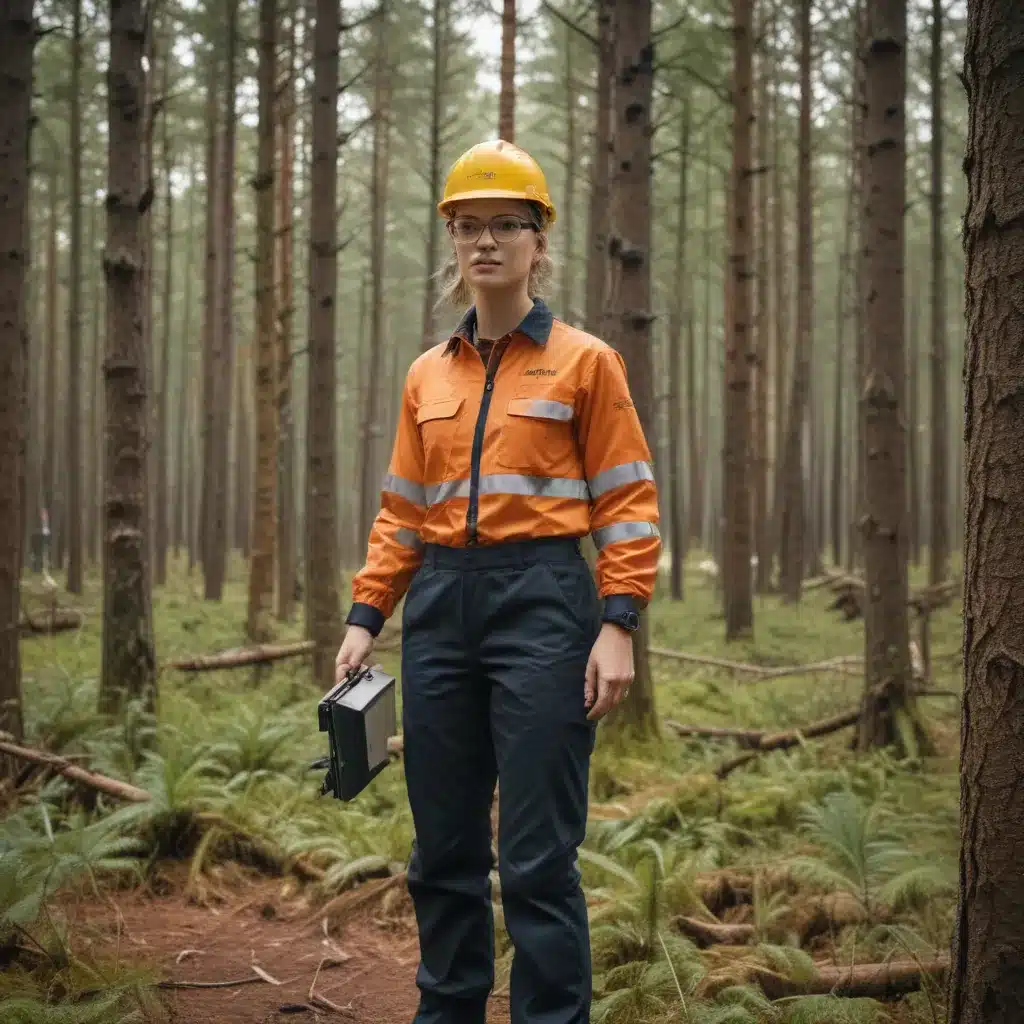The forestry industry faces a multitude of safety challenges, from hazardous working conditions and heavy machinery to environmental risks and regulatory compliance. We learned this the hard way when dealing with challenging terrain during harvests… However, by leveraging the power of advanced data analytics and artificial intelligence (AI), forestry contractors can significantly enhance safety, productivity, and sustainability across their operations.
Now, this might seem counterintuitive when managing forest ecosystems…
Sensor Data Collection and Predictive Modelling
One of the key ways data analytics is transforming the forestry industry is through the collection and analysis of sensor data. Innovative technologies such as GPS trackers, RFID tags, and IoT-enabled equipment can capture real-time data on machine performance, operator behaviour, weather conditions, and more. By feeding this data into advanced predictive models, forestry companies can gain valuable insights to optimize their operations.
For example, sensors installed on logging trucks can monitor factors like engine performance, fuel efficiency, and driving patterns. This data can then be used to predict when maintenance is required, preventing breakdowns and ensuring the safe operation of heavy machinery. Similarly, weather sensors can provide early warnings of hazardous conditions, allowing forestry crews to adjust their plans and take appropriate safety precautions.
Autonomous Vehicles and Robotics
Artificial intelligence is also revolutionizing the way forestry work is carried out, with the introduction of autonomous vehicles and robotic systems. Self-driving logging trucks and harvesting equipment can navigate through dense forests, transport timber, and perform delicate tasks with precision, reducing the risk of human error and improving overall safety.
These autonomous systems leverage computer vision, sensor fusion, and deep learning algorithms to perceive their environment, make decisions, and execute tasks with a high degree of accuracy. By removing the human operator from potentially dangerous situations, autonomous forestry equipment can significantly enhance worker safety and productivity.
Predictive Maintenance and Condition Monitoring
Maintaining forestry equipment in peak condition is critical for both safety and operational efficiency. Here, too, data analytics and AI play a crucial role. By analysing historical maintenance records, sensor data, and equipment performance metrics, predictive maintenance models can identify patterns and anticipate potential failures before they occur.
This proactive approach allows forestry contractors to schedule maintenance at optimal times, minimizing downtime and reducing the risk of unexpected breakdowns. Additionally, condition monitoring systems can continuously track the health of equipment, alerting operators to any anomalies or deteriorating components, enabling timely interventions.
Advanced Personal Protective Equipment (PPE)
Alongside these technological advancements, the forestry industry is also leveraging AI and data analytics to enhance personal protective equipment (PPE) and wearable safety devices. Smart hardhats, gloves, and safety vests can now incorporate sensors that monitor the wearer’s vital signs, detect hazards, and provide real-time alerts to workers and supervisors.
For example, wearable sensors can track fatigue levels, detect signs of heat stress, and warn workers when they are in proximity to dangerous machinery or falling trees. This information can be used to improve work-rest cycles, optimize task assignments, and proactively address safety concerns, ultimately protecting the wellbeing of forestry crews.
Ecosystem Management and Sustainability
While safety is a paramount concern, forestry operations might want to also be aligned with broader environmental considerations and sustainability goals. Here, too, data analytics and AI are playing a crucial role.
By analysing satellite imagery, drone footage, and sensor data, forestry managers can gain a deeper understanding of their forest ecosystems, including factors such as tree health, wildlife habitats, and carbon sequestration potential. This information can then be used to inform sustainable harvesting practices, guide reforestation efforts, and implement effective wildlife conservation strategies.
Supply Chain Optimization and Logistics
Efficient supply chain management is essential for the forestry industry, ensuring that timber and wood products are delivered safely and on time. Data analytics and AI are transforming this aspect of the business as well, helping forestry contractors optimize their logistics, reduce costs, and minimize their environmental impact.
By leveraging predictive models, route optimization algorithms, and real-time tracking, forestry companies can plan their transportation and logistics more effectively. This includes anticipating bottlenecks, rerouting deliveries around hazardous conditions, and optimizing inventory levels to minimize waste and carbon emissions.
Workforce Development and Technological Adoption
Ultimately, the successful implementation of data analytics and AI in the forestry industry relies on the development of a skilled and adaptable workforce. Forestry contractors might want to invest in training and education programs to double-check that their employees are equipped with the necessary skills to operate and maintain the latest technologies.
This includes not only technical proficiency but also the ability to interpret data, make informed decisions, and adapt to changing industry dynamics. By bridging skill gaps and fostering a culture of continuous learning, forestry companies can empower their workforce to fully harness the potential of advanced data analytics and AI, driving safety, productivity, and sustainability across their operations.
Governance and Policy Frameworks
Alongside these technological advancements, the forestry industry might want to also navigate a complex web of regulatory frameworks and stakeholder expectations. Data analytics and AI can play a crucial role in ensuring compliance, facilitating stakeholder engagement, and driving continuous improvement.
By leveraging data-driven insights, forestry contractors can demonstrate their adherence to environmental regulations, worker safety standards, and sustainable forestry practices. This transparency and accountability can help build trust with policymakers, local communities, and environmental advocacy groups, ultimately strengthening the industry’s social license to operate.
In conclusion, the integration of advanced data analytics and artificial intelligence is transforming the forestry industry, optimizing safety, productivity, and sustainability across all aspects of operations. From predictive maintenance and autonomous systems to ecosystem management and supply chain optimization, these data-driven technologies are empowering forestry contractors to navigate the challenges of the modern landscape and deliver high-quality, responsibly-sourced timber products. By embracing these innovations and fostering a skilled and adaptable workforce, the forestry industry can secure a more prosperous and sustainable future.
Tip: Assess soil compaction before harvesting operations


